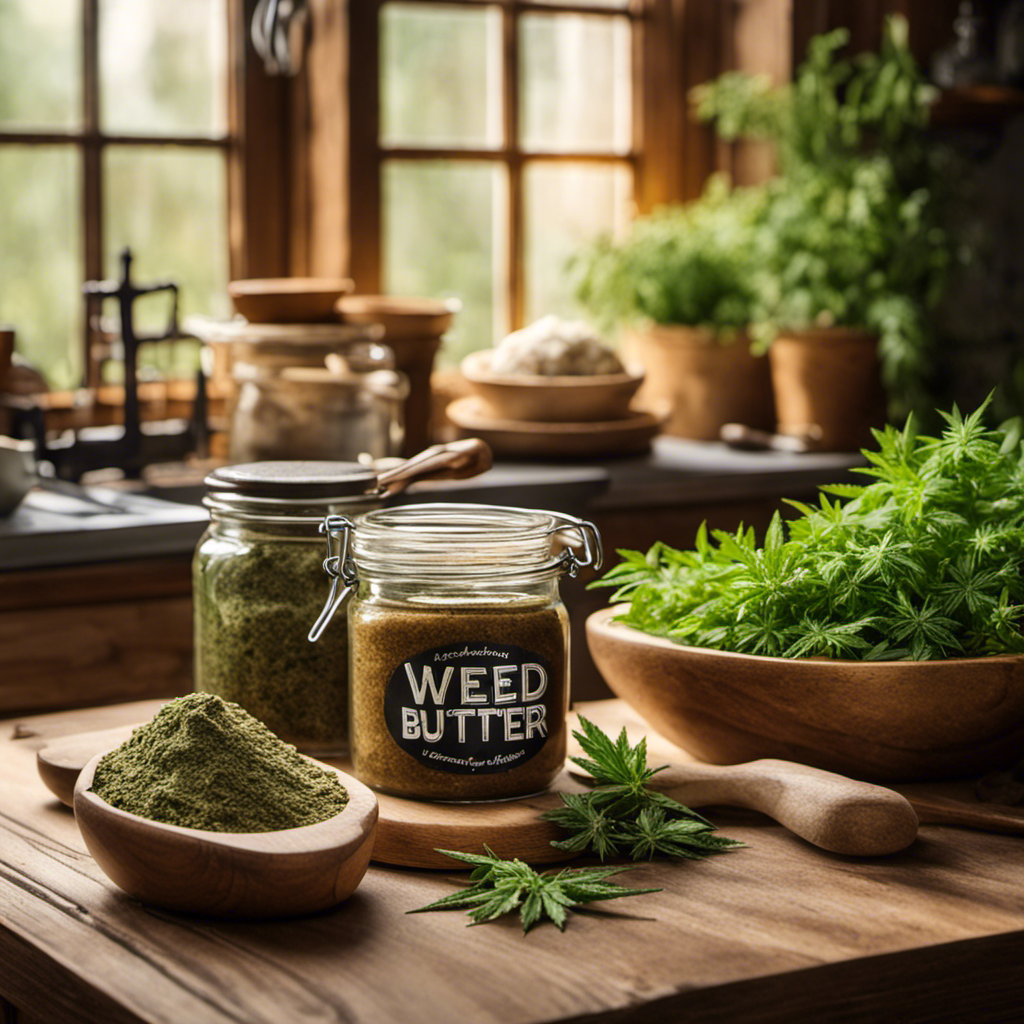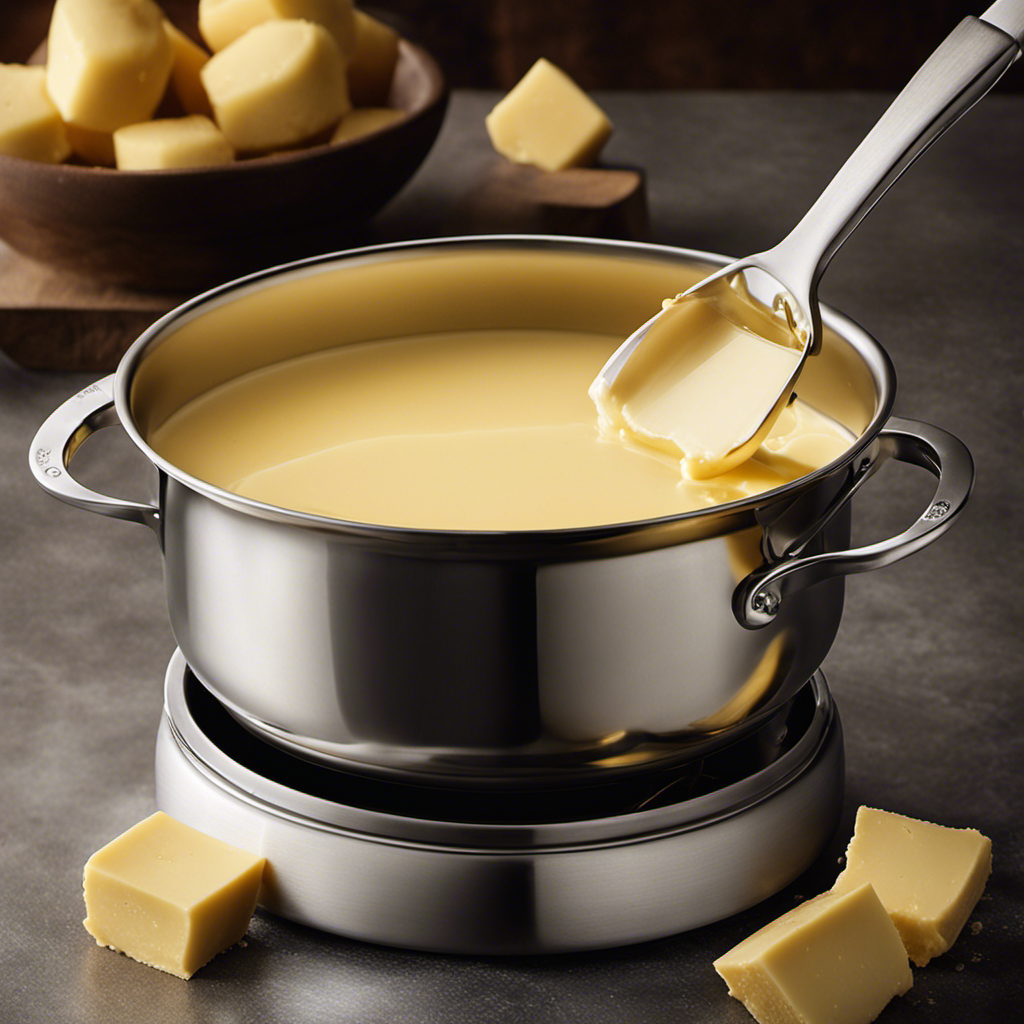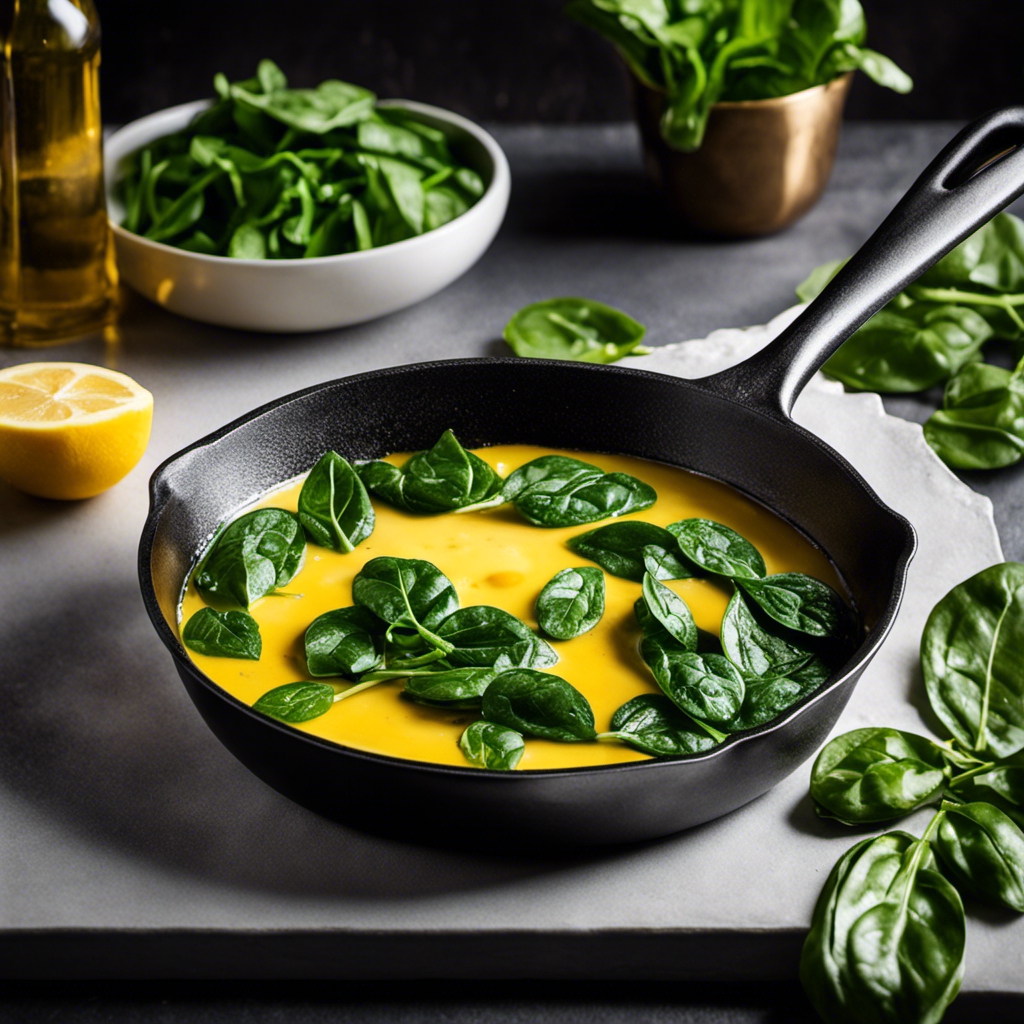As a butter bean enthusiast, I am always on the lookout for the best places to find these creamy delights. Look no further, as I have already done the research for you!
In this article, I’ll guide you through the top spots to buy butter beans, from local farmers markets bursting with fresh produce, to online retailers delivering straight to your doorstep.
Get ready to embark on a butter bean adventure like no other!
Key Takeaways
- Local shopping for butter beans offers freshness and quality, limited selection but varied pricing options, and supports local agriculture and community growth.
- Online shopping provides a wide range of butter bean options, offers convenience and easy price comparison, and allows access to specialty and hard-to-find products.
- Specialty food stores offer unique varieties of butter beans, with the option to see and touch products before purchasing in local stores, or a wider selection and convenience of online shopping.
- Ethnic food markets provide unique ingredients and specialty butter bean products, with the option to explore local grocery store alternatives or online platforms for convenience and exciting options.
Local Farmers Markets
You can find butter beans at local farmers markets. These bustling hubs of fresh produce are a treasure trove for food enthusiasts like me. As I stroll through the market, the vibrant colors and enticing aromas captivate my senses.
The beauty of local farmers markets lies in their seasonal availability. Butter beans, with their smooth texture and nutty flavor, are no exception. During the peak summer months, when the sun is shining and the fields are abundant, these tender legumes grace the stalls of farmers markets.
The farmers proudly display their harvest, showcasing the fruits of their labor. It’s a joy to support local growers and indulge in the freshest produce available.
Grocery Stores
Check out the grocery stores nearby for a variety of options. When it comes to buying butter beans, these stores offer convenience and a wide range of choices. From canned butter beans to the fresh ones in the produce section, you’ll find something that suits your needs.
One of the great things about grocery stores is the pricing options available. You can compare prices and choose the best deal for your budget. Additionally, many grocery stores now offer organic options for those who prefer to buy organic products.
Whether you’re looking for affordable options or prefer to go organic, the grocery stores nearby have got you covered. So head on over and explore the aisles for all your butter bean needs.
Online Retailers
Take a look at the online retailers available to find a wide range of options for your shopping needs. When it comes to buying butter beans, online retailers offer convenience, competitive pricing, and a variety of shipping options.
With just a few clicks, you can compare prices from different sellers and choose the best deal that suits your budget. Whether you prefer organic, canned, or dried butter beans, online retailers have it all. Not only do they offer a wide selection of brands and sizes, but they also provide detailed product descriptions and customer reviews to help you make an informed decision.
Plus, with various shipping options, you can have your butter beans delivered right to your doorstep in no time. So why wait? Start exploring online retailers for your butter bean needs today.
Now, let’s move on to specialty food stores, where you can find unique varieties of butter beans and other hard-to-find ingredients.
Specialty Food Stores
When it comes to shopping for specialty food items, there are a few key factors to consider.
Local vs. online options, pricing and availability, and store recommendations.
Local stores offer the benefit of being able to see and touch the products before purchasing, as well as supporting local businesses.
On the other hand, online retailers often have a wider selection and the convenience of shopping from home.
Comparing prices and availability across different stores is also important, as prices can vary greatly and certain items may be harder to find.
Lastly, hearing recommendations from others who have shopped at specific stores can help guide your decision and ensure a positive shopping experience.
Local Vs. Online
You can’t beat the convenience of ordering butter beans online, but there’s something special about supporting local businesses. When it comes to buying butter beans, I always try to find options that support local farmers and businesses.
Here are four reasons why choosing local over online is worth considering:
-
Freshness: Local farmers often provide beans that are harvested at the peak of freshness, ensuring superior taste and quality.
-
Supporting the community: By buying from local businesses, you contribute to the economic growth and sustainability of your community.
-
Store options: Local stores offer a variety of butter bean options, including different varieties and sizes, giving you more choices.
-
Personal connection: Building relationships with local farmers and store owners creates a sense of community and trust.
While online shopping offers convenience, nothing beats the experience of supporting local businesses and connecting with your community.
Now, let’s delve into the pricing and availability of butter beans.
Pricing and Availability
Now, let’s explore the cost and availability of butter beans. When it comes to purchasing butter beans, you have the option of buying them locally or online. Local markets and grocery stores often offer fresh butter beans that are sourced from nearby farms. This ensures that you are getting the highest quality and freshest beans available. On the other hand, buying butter beans online provides convenience and access to a wider range of options. You can easily compare prices and read reviews from other customers before making a purchase. To help you in your search for the best place to buy butter beans, I have created a table below with some store recommendations:
| Store | Local/Online | Availability | Price Range |
|---|---|---|---|
| Farmers’ Market | Local | Seasonal | $2-$4/lb |
| Whole Foods | Local | Year-round | $3-$5/lb |
| Amazon | Online | Year-round | $3-$6/lb |
| FreshDirect | Online | Year-round | $4-$7/lb |
| Local Co-op Store | Local | Year-round | $2-$5/lb |
Whether you choose to buy locally or online, these store recommendations should help you find the butter beans you need at a reasonable price. Happy shopping!
Store Recommendations
If you’re looking for recommendations on where to purchase butter beans, here are some store options for you to consider:
-
Local Farmers Markets: These markets are a great place to find fresh, locally grown butter beans. You can support local farmers while enjoying the best quality produce. Plus, you can ask the farmers directly about their growing practices and get some tips on cooking butter beans.
-
Online Retailers: There are several online retailers that specialize in selling a variety of beans, including butter beans. You can conveniently browse through different brands and compare prices from the comfort of your home. Just make sure to read customer reviews and check the shipping policies before making a purchase.
-
Specialty Grocery Stores: Many specialty grocery stores carry a wide selection of beans, including butter beans. These stores often prioritize quality and offer unique varieties that you may not find elsewhere. Don’t hesitate to ask the store staff for recommendations or cooking suggestions.
-
Local Co-ops: Co-ops are community-owned grocery stores that focus on providing fresh and locally sourced products. They often work directly with farmers, ensuring that you get the freshest butter beans available. Shopping at a local co-op not only supports local farmers but also fosters a sense of community.
Co-ops and Natural Food Stores
Co-ops and natural food stores usually stock butter beans for those seeking them. These stores offer a variety of options for purchasing butter beans, whether you prefer to shop locally or online. When it comes to availability, local stores may have a more limited selection, as they rely on local farmers and suppliers. However, they often prioritize freshness and quality, ensuring you get the best butter beans available. On the other hand, online retailers offer a wider range of options, allowing you to choose from different brands and varieties. While online shopping provides convenience and the ability to compare prices, it’s important to consider shipping costs and delivery times. Ultimately, whether you choose to buy locally or online, the pricing and availability of butter beans will vary, so it’s worth exploring both options to find the best fit for your needs.
| Local Shopping | Online Shopping |
|---|---|
| Limited selection | Wide range of options |
| Freshness and quality | Convenience and comparison |
| Varied pricing | Shipping costs and delivery times |
Ethnic Food Markets
When it comes to finding unique ingredients and specialty products, sometimes your local grocery store just doesn’t have what you need. That’s where local grocery store alternatives and online specialty retailers come in.
From small independent markets that focus on specific cuisines to online platforms that offer a wide range of specialty ingredients, these alternatives provide a convenient and exciting way to explore new flavors and expand your culinary repertoire.
Local Grocery Store Alternatives
You can find butter beans at other nearby grocery stores instead of co-ops. When I’m looking for fresh butter beans, I like to explore the options beyond the typical co-op. Here are four alternative places where you can find these delicious legumes:
-
Local Farms: Check out your local farms or farmers’ markets. They often have a variety of fresh produce, including butter beans, straight from the source. Not only will you be supporting local agriculture, but you’ll also get to enjoy the taste of farm-fresh butter beans.
-
Roadside Stands: Keep an eye out for roadside stands on your way to work or during a weekend drive. These charming little stalls often offer a range of seasonal fruits and vegetables, including butter beans. It’s a great way to discover new places and support small businesses.
-
Community Gardens: Many neighborhoods have community gardens where locals grow their own produce. These gardens often have surplus crops available for purchase or exchange. Take a stroll through your community garden and inquire about butter beans. You might be surprised by what you find!
-
Specialty Grocery Stores: Look for specialty grocery stores in your area that focus on local and organic products. These stores often have a wide selection of fresh produce, including butter beans. They prioritize sourcing from nearby farms, ensuring you get the freshest and highest quality ingredients.
Online Specialty Retailers
If you’re looking for a convenient option, online specialty retailers can provide a wide selection of local and organic products. When it comes to purchasing groceries, the debate between local stores and online retailers often revolves around pricing and availability.
Online retailers offer the convenience of shopping from the comfort of your own home, with a vast array of products at your fingertips. You can easily compare prices and find the best deals without having to visit multiple stores. Additionally, online retailers often have a wider selection of specialty and hard-to-find products, giving you access to items that may not be available locally. However, it’s important to consider shipping costs and delivery times when making your purchasing decisions.
As we explore other options, let’s now turn our attention to bulk food suppliers who offer great deals for buying in larger quantities.
Bulk Food Suppliers
To find bulk food suppliers, check out local grocery stores and warehouse clubs for butter beans. These places often carry a wide variety of products and can offer competitive prices.
But what if you want to support local farmers and get the freshest butter beans possible? Well, luckily, many local farmers markets also have bulk food suppliers who offer a range of products, including butter beans.
Here are four reasons why buying from these suppliers is a great choice:
-
Freshness: Local farmers markets source their products directly from farmers, ensuring that you get the freshest butter beans available.
-
Sustainability: By buying from local farmers, you support sustainable farming practices and reduce your carbon footprint.
-
Variety: Local farmers markets often offer a wider variety of butter beans compared to traditional grocery stores.
-
Community Connection: Shopping at local farmers markets allows you to connect with the people who grow your food and learn about their farming methods.
Frequently Asked Questions
Are Butter Beans the Same as Lima Beans?
Yes, butter beans and lima beans are the same thing. They have a creamy texture and are a great source of protein and fiber. To cook butter beans, soak them overnight, then simmer for about an hour until tender.
How Can I Store Butter Beans to Ensure Their Freshness?
To ensure the freshness of butter beans, I store them in an airtight container in the refrigerator. This helps to preserve their flavor and texture. It’s important to keep them away from moisture and heat.
Are There Any Specific Health Benefits Associated With Consuming Butter Beans?
Eating butter beans has several health benefits due to their high nutritional value. They are packed with fiber, protein, and essential vitamins and minerals. Incorporating butter beans into your diet can support digestion, promote heart health, and boost overall nutrition.
Can Butter Beans Be Used in Both Savory and Sweet Recipes?
Butter beans can be used in both savory and sweet recipes. They add a creamy texture and subtle flavor. One interesting statistic is that butter beans are high in fiber, providing 16 grams per cup. Incorporate them into soups, stews, salads, and even desserts for a nutritious and delicious meal.
What Is the Average Price Range for Butter Beans in Different Stores and Markets?
The average price range for butter beans varies depending on the store or market. The best places to buy them are local farmers markets or grocery stores that specialize in organic produce. They usually cost around $2 to $4 per pound.
Conclusion
So there you have it, folks, the ultimate guide to finding the butter beans of your dreams!
From local farmers markets to online retailers, there are plenty of options to satisfy your butter bean cravings.
And don’t forget about those specialty food stores and ethnic food markets, where you can discover unique and delicious variations of this humble legume.
Whether you’re a butter bean connoisseur or just starting your culinary journey, these sources will have you saying ‘Butter beans, please!’ in no time.
Happy bean hunting!










